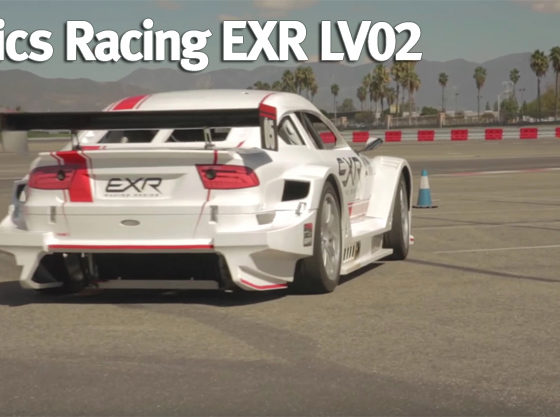
Project Pure Performance E46 Time Attack
In the pages of MotoIQ, we have partnered with Pure Performance in Laguna Hills California for many of our BMW projects. Why? Because Pure Performance, eats sleeps and breaths BMW performance both on the street and through racing with customer cars and their own shop race car.
We will be collaborating with Pure Performance on the building of a RWD limited class car for Superlap Battle. The car of our choice is a E46. We choose the E46 because, well, we have always loved the styling of the car! The fact that the E46 chassis is coming down in price on the used market and Pure Performance just happened to have a straight stripped shell lying around sealed the deal.
In the first stage of the cars construction we will be approaching the building of the backbone of any car, a nice all inclusive roll cage. For any race car the cage is the heart of the chassis. For proper suspension tuning, the chassis must be as rigid as possible. This is for two reasons, the natural frequency of the body structure must be higher than any natural periodic vibration that can be induced into the structure in operation. If the induced vibration is the same as the natural frequency or a low order harmonic of it, the vibration can build and become a force that can cause tire shock. The body of the car is a huge undamped spring that if allowed to flex freely, can add uncontrolled energy into the suspension itself causing tire shock and loss of potential grip.
The other reason for a good cage is to protect the meat sack behind the wheel in the event of a crash. A good cage can keep the drivers compartment intact in a severe crash, yet have some controlled compliance to help spread out the force impulse to protect the driver. A good cage should also be able to absorb multiple impacts and rolls.
Take a look and see how our cage came out as our car progresses from a bare shell to a hopefully competitive Time Attack Machine.
 Our cage ties the entire unibody together from front to rear. It attaches to the chassis in many points and ties all of the suspension pick up points into its main structure. Our cage is mostly made of 1.75″ 1020 DOM tubing with a 0.095″ wall thickness. NASA mandates the use of DOM vs the cheaper ERW (Electrical Resistance Welded) tubing. DOM stands for drawn over mandrel and is a manufacturing process where a steel strip if rolled into tube shape and the seam electrically welded. If you were to use ERW tubing, the process of making the tube would stop here. After this the tube is drawn over a mandrel to cold work it into it’s final dimensions. The cold working refines the steels grain structure, aligning the metals crystal lattice internal structure improving it’s mechanical properties. It also gives the tube more exact internal and external dimensions, important when the minimum wall thickness is mandated by a sanctioning body.
Our cage ties the entire unibody together from front to rear. It attaches to the chassis in many points and ties all of the suspension pick up points into its main structure. Our cage is mostly made of 1.75″ 1020 DOM tubing with a 0.095″ wall thickness. NASA mandates the use of DOM vs the cheaper ERW (Electrical Resistance Welded) tubing. DOM stands for drawn over mandrel and is a manufacturing process where a steel strip if rolled into tube shape and the seam electrically welded. If you were to use ERW tubing, the process of making the tube would stop here. After this the tube is drawn over a mandrel to cold work it into it’s final dimensions. The cold working refines the steels grain structure, aligning the metals crystal lattice internal structure improving it’s mechanical properties. It also gives the tube more exact internal and external dimensions, important when the minimum wall thickness is mandated by a sanctioning body. 1020 denotes a mild steel, high carbon steel alloy. This is considered to be a high strength steel with a tensile strength of about 85,000 psi. We prefer 1020 to super high strength alloyed steels like 4130 chrome molly because it is less sensitive to embrittlement from welding heat, does not require post welding heat treatment for full strength and is more ductile, allowing it to absorb more crash energy and take multiple hits without failing as easily. Some sanctioning bodies like NASA and NASCAR mandate the use of 1018,1020 and 1026 DOM for these reasons. For our cage starting at the front you can see that the front legs have base plates that go to the floor as far forward in the chassis as possible that also wrap around the frame rails. A strong dash bar ties the legs together.
1020 denotes a mild steel, high carbon steel alloy. This is considered to be a high strength steel with a tensile strength of about 85,000 psi. We prefer 1020 to super high strength alloyed steels like 4130 chrome molly because it is less sensitive to embrittlement from welding heat, does not require post welding heat treatment for full strength and is more ductile, allowing it to absorb more crash energy and take multiple hits without failing as easily. Some sanctioning bodies like NASA and NASCAR mandate the use of 1018,1020 and 1026 DOM for these reasons. For our cage starting at the front you can see that the front legs have base plates that go to the floor as far forward in the chassis as possible that also wrap around the frame rails. A strong dash bar ties the legs together.


